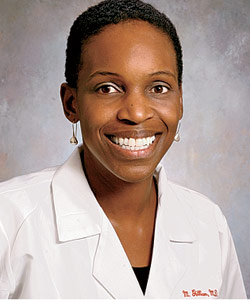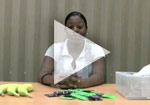
Melissa GilliamThe statistics are shocking. Each year, about 750,000 teenage girls in the United States end up pregnant, and one in four will contract a sexually transmitted disease. But those troubling numbers shouldn’t really come as a surprise: A nationwide survey of high-school students revealed that four in ten teens failed to use a condom the last time they had intercourse.
Enter Dr. Melissa Gilliam, the chief of family planning and contraceptive research and the head of the program in gynecology for children, adolescents, and young women at the University of Chicago Medical Center. An ob-gyn, Gilliam devotes herself to figuring out why so many teens just say no to contraception, if not to sex; at the same time, she and her colleagues conduct trials on new and existing contraceptives and explore adolescents’ attitudes toward them. To help prevent unwanted pregnancies, Gilliam has even enlisted local teens to help discover more meaningful methods of sex education (see ”Kid Vids Put Lid on STDs”).
Related:
New oral contraceptives don’t interest Gilliam. Since dozens of them already exist, she says, “we’re not going to make a big impact in terms of public health.” Instead, she is currently testing two nonoral contraceptives: an intrauterine device (IUD), not yet on the market, as well as an implantable contraceptive called Implanon, which is currently available. For the latter product—a very tiny rod that is inserted into a woman’s arm for up to three years—Gilliam wants to learn how obesity affects its performance, since the clinical trials (not conducted at the U. of C.) only looked at women within 130 percent of ideal body weight. As for the IUD, Gilliam is working with a nonprofit that wants to introduce a progestin-infused IUD that prevents menstrual periods and can remain in place for five years.
Gilliam also wants to understand why people act the way they do so that she can try to modify their behavior. For instance, since many teens forget to take a birth control pill every day, long-term contraceptive methods, such as IUDs, can be more effective. Yet Gilliam’s studies among African American and Latino women revealed that many of them worried that inserting an IUD might cause pain—and that the device could impact future fertility. Alleviating those concerns could encourage use of long-term contraception.
Recently Gilliam looked at how college students used birth control pills as compared to the vaginal ring, a nondaily method that’s like a diaphragm but without the “trampoline in the middle,” Gilliam says. Wanting to understand who would be the right candidates for either method, she and her team spent three months studying the behavior of Chicago-area college students, looking, for instance, at what time they went to bed, how much sleep they got, and whether they had jobs. “What we found is that women with very busy, chaotic lives were worse pill users than those with very routine schedules,” Gilliam says—information that could help doctors and their patients make more informed contraception choices.
What’s more, after the study ended—and with it the free contraceptives—almost 60 percent of the women stopped using the products. “It cost too much,” says Gilliam. “It just really gives you a sense of, even though there are these behavior factors, there are these larger issues—like paying for it.”
Gilliam and her colleagues are also following African American mothers who are 18 and younger to see how their education, housing, exercise, weight gain, emotional state, and relationships influence the risk of a repeat pregnancy. Some young mothers, says Gilliam, “rise to the challenge” of parenthood. “But it’s incredibly hard for them to stay in school and to take care of themselves personally.” It’s even tricky for them to make health-care appointments and to pick up contraceptives.

Another project: conducting in-depth interviews with minors to see if they talk to their parents about sex. “If the answer is nobody’s talking about this, then we know we need to educate parents about communicating with their children,” says Gilliam. “They should explain their expectations and values to their children regarding education, sexual activity, smoking, and so on—even if they do not know what words to use.” Making the effort to communicate is of value in itself, she insists.
Gilliam is heartened that as of January 2010, Illinoisans who test positive for chlamydia and gonorrhea can also get a prescription for their partners, even if they haven’t visited a doctor. She still touts condoms (after abstinence) as the most effective way to prevent sexually transmitted diseases, and she maintains that pairing condoms with a highly effective contraceptive is the best way to avert pregnancy. “Only 100 percent condom use is going to be prohibitive,” she says. “Maybe the answer is looking at wider condom availability”—a solution that Gilliam’s teenage collaborators may help provide.
Illustration: Patrick Leger; Photograph: Courtesy of Melissa Gilliam



